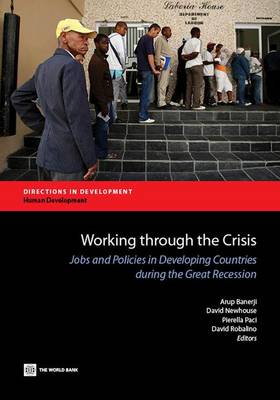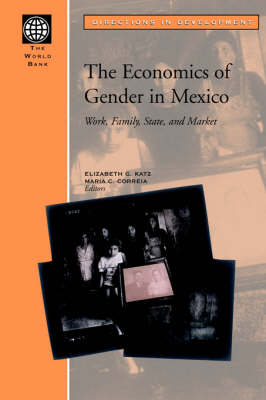Directions in Development
4 total works
The end of the MFA was followed by rising apparel exports, falling prices, and a reallocation of production and employment between countries. There were also significant changes within countries. The first main finding of this report is that export and employment patterns after the MFA/ATC did not necessarily match predictions. While many predicted that production would shift to low-wage countries, this book shows that only 13% of variation in export changes post-MFA can be explained by the differences in wage levels. Second, changes in exports are usually, but not always, good indicators of what happens to wages and employment within countries. This is especially important for policy because it shows that simply using exports as a metric of 'success' in terms of helping the poor is not sufficient. Third, the Book identifies the specific ways that changes in the global apparel market affected earnings. The Book shows that wage premiums change in predictable ways: rising (in most cases) in countries that were proactive in adapting to the MFA phase-out and expanded their market shares, and falling in countries that failed to respond in a timely fashion to the changing environment.
The book shows that promoting 'upgrading' (defined as shifting to higher-value goods, shifting up the value chain, or 'modernizing' production techniques) seems to be necessary for sustainable competitiveness in the apparel sector but does not necessarily help the poor. Policies that support upgrading need to be complemented with targeted workforce development to make sure that the most vulnerable workers are not left behind. Having a vision for the evolution of the apparel sector that incorporates developing worker skills seems crucial. Otherwise, less-skilled workers could miss out on opportunities to gain valuable work experience in manufacturing.
The book shows that promoting 'upgrading' (defined as shifting to higher-value goods, shifting up the value chain, or 'modernizing' production techniques) seems to be necessary for sustainable competitiveness in the apparel sector but does not necessarily help the poor. Policies that support upgrading need to be complemented with targeted workforce development to make sure that the most vulnerable workers are not left behind. Having a vision for the evolution of the apparel sector that incorporates developing worker skills seems crucial. Otherwise, less-skilled workers could miss out on opportunities to gain valuable work experience in manufacturing.
'... the relationship between employment growth and output growth ... is greatly affected by the functioning, efficiency and institutional structure of the labor market.' - Joseph Stiglitz, Chief Economist, World Bank Despite the resumption of economic growth in most LAC countries since the late 1980s, improvements on the employment/unemployment front have been sluggish at best, with a few notable exceptions. In many countries, renewed growth in LAC in the 1990s has so far failed to generate adequate new jobs in place of those lost during the adjustment, and to restore wages to pre-crisis levels. The focus of this book is on: * the performance of labor markets in the LAC region since the beginning of significant structural reforms most countries in the region have undertaken; * the structure of labor markets, institutions, and incentive structures; * the effects of that structure on employment, earnings, income distribution, and poverty levels; * the role of labor market institutions in labor market trends; * the options for reform and the benefits of comprehensive labor reforms, as evidenced inside and outside the region; * labor policy reforms to improve in a sustainable way the employment/unemployment outlook.
Mexico is experiencing significant demographic, social, and economic changes, and the distinct roles of women and men in the Mexican economy are changing as well. In both urban and rural areas, large numbers of young Mexican women are entering the labor force, and as girls' education reaches parity with boys, this trend will intensify. However, women continue to face special constraints on their economic activities which are largely related to their household roles and responsibilities. Macroeconomic change affects Mexican men, who must deal with shifting labor market opportunities and government policies. 'The Economics of Gender in Mexico' examines gender differences in the Mexican economy, with a specific focus on labor markets. Gender differences are reviewed over the course of a life cycle, beginning with education and child labor, and on through adult urban and rural labor force participation. This book also considers the situation of the elderly women and men in Mexico. Each chapter uses different data sources and analytical methodologies but the volume in its entirety is guided by a gender perspective that looks at the situation of both men and women as distinct groups and in relationship to one another. The chapters contain detailed quantitative analysis drawing on national labor force statistics, specialized regional household surveys, and firm-level data. This volume is based on the commissioning of a series of technical papers by the World Bank, in collaboration with several Mexican government agencies.
This book is a compendium of Mexico's development process, one that recognizes its comprehensive and multi-faceted nature. It focuses on five overarching themes including fiscal sustainability, growth and competitiveness, poverty and inequality, sustainable future, and good government.



